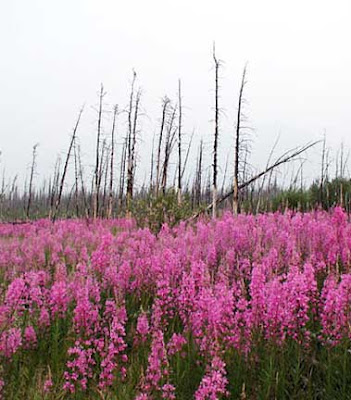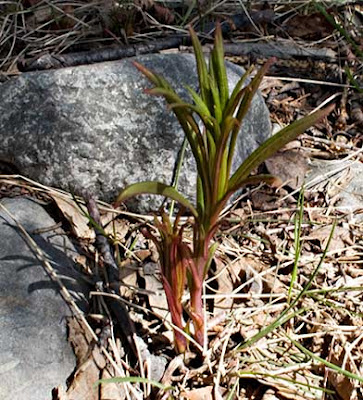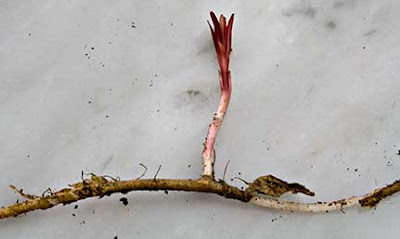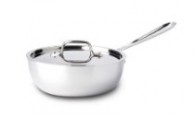
After the Fire: Destruction Bay, Yukon Territories, Canada/Photograph by Teeny Metcalfe
Fireweed shoot season is upon Southcentral Alaska.
Fireweed (Epilobium angustifolium) grows along Alaska’s roadways and waste areas (and throughout North America as far south as California in the west and the Carolinas in the east). Spreading rapidly on underground runners, fireweed is one of the first plants to reestablish itself after forest fires.
Fireweed’s brilliant magenta flowers brighten Alaska’s summer landscape and, in the kitchen, are an attractive salad garnish. The flowers are also the source of fireweed honey, a popular Alaskan sweetener.

In spring, when fireweed first emerges from the ground, its shoots are edible and similar to wild asparagus. As they grow, fireweed stalks remain edible in the sense they aren’t harmful to humans but, for me, become unacceptably bitter. The larger the shoots and the more developed the leaves, the more bitter they taste.
Fireweed grows rapidly during Alaska’s long summer days; today, from sunrise to sunset, we had 18 hours of daylight. As a result, the season for harvesting fireweed shoots is very short (only a few more days now).

The sweetest fireweed shoots are those cut when the leaves are still reddish. The blanched, underground portion is the sweetest part of the shoots, so I slip the knife several inches underground to harvest fireweed.
The amount of bitterness in fireweed shoots varies unpredictably. In Discovering Wild Plants: Alaska, Western Canada, the Northwest (Alaska Northwest Books 2003), the best available book on wild Northern edibles, Janice Schofield says, “Soil conditions affect flavor; I’ve found spring shoots rang[ing] from mild to quite bitter.”
After harvesting, I taste the shoots to determine their degree of bitterness. If they’re very sweet, the shoots may be eaten raw. If they are more bitter than I like, I blanch them in boiling salted water before using them in recipes.
Fireweed shoots can be used in lieu of asparagus in most recipes, on their own or mixed with other vegetables in a salad, added to soups, and in any dish that calls for cooked greens. If you’re lucky enough to harvest an abundance of fireweed shoots, blanch and freeze them for winter use.
UPDATE: In a comment, Mariana from History of Greek Food pointed out that Fireweed (Epilobium angustifolium) is “found in the higher elevations of the Rhodope Mountains” where the shoots and leaves are eaten boiled. Mariana noted its Latin name is from the Greek words epi (on) and lovos (pod) and “refers to the way the flower sits on top of a long ovary, which later becomes a thin seed pod.” She says the adjective angustifolium means “with narrow leaves.” In Greek, Fireweed is called kafsokxyla (καυσόξυλα) and, in Bulgarian, Tesnolistna varbovka (Теснолистна върбовка).
Coming Soon: I just checked the woods and, as of today, the Devil’s Club is ripe for picking.)
UPDATE: My post on harvesting and preparing Devil’s Club is here.





